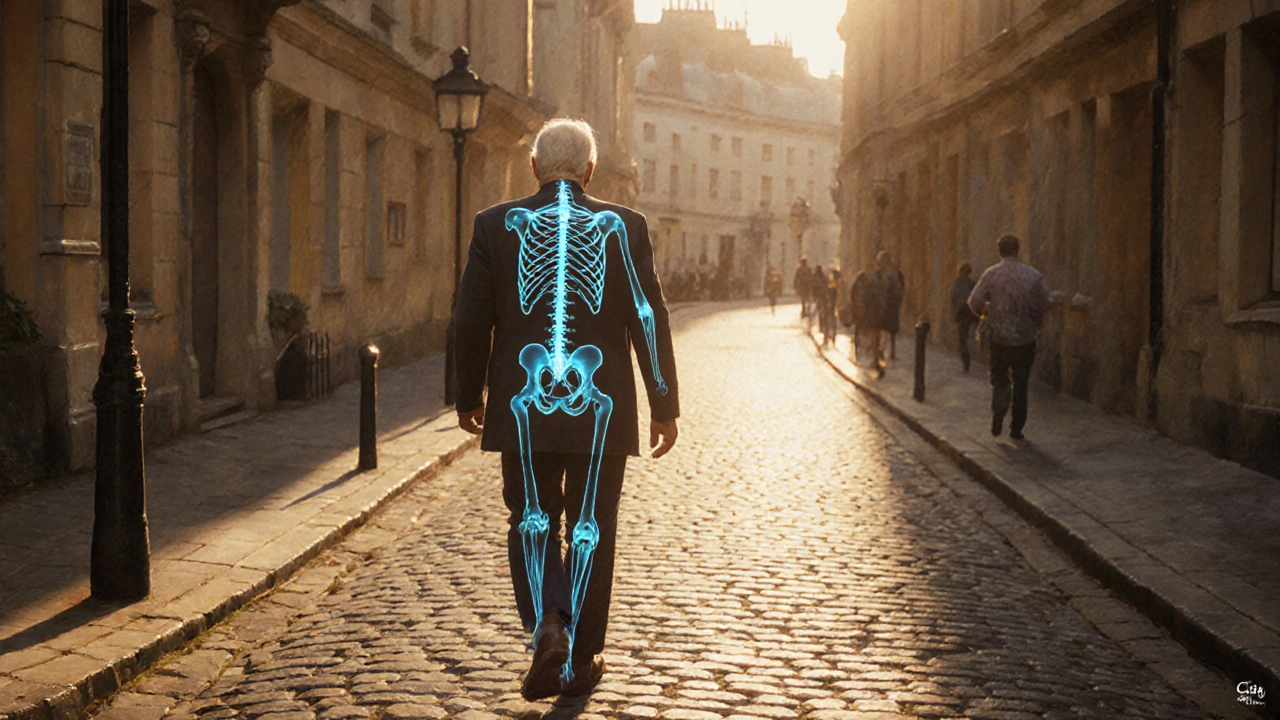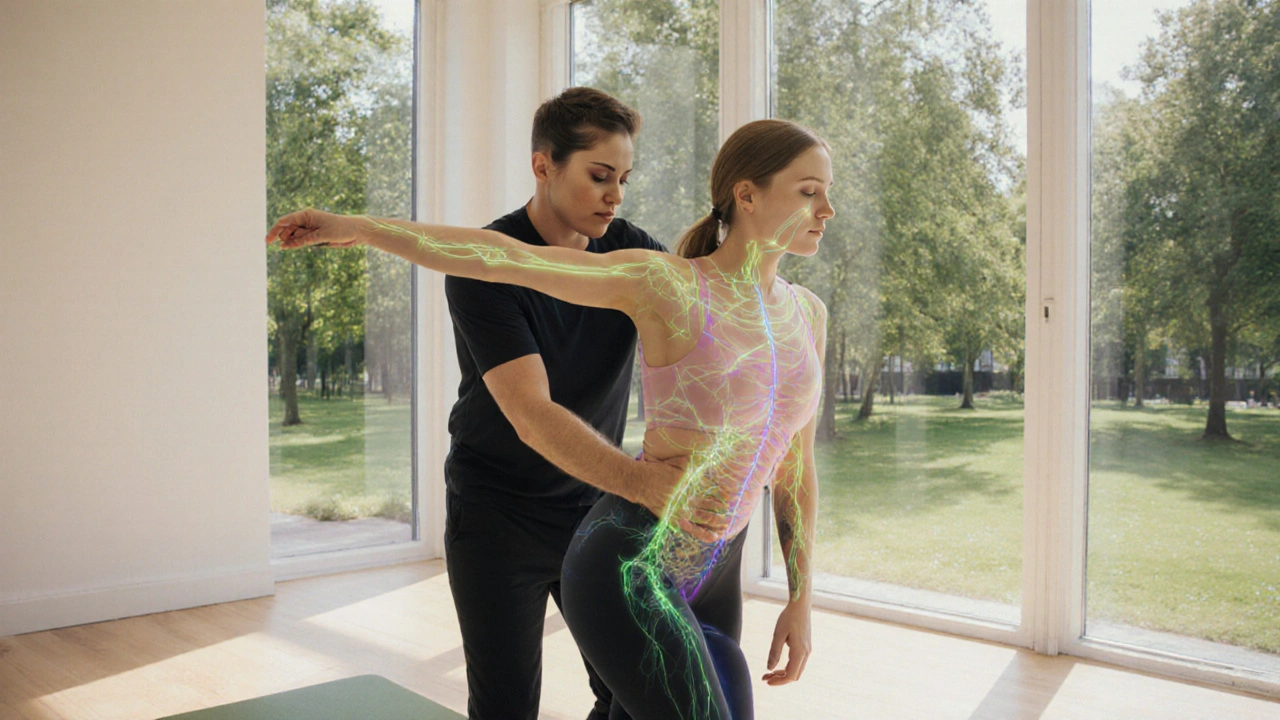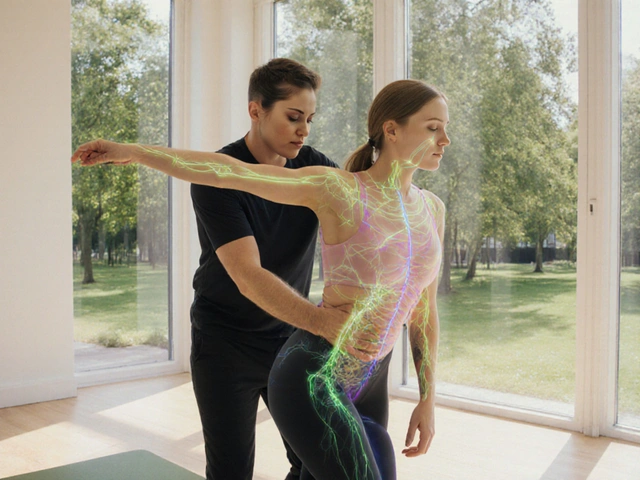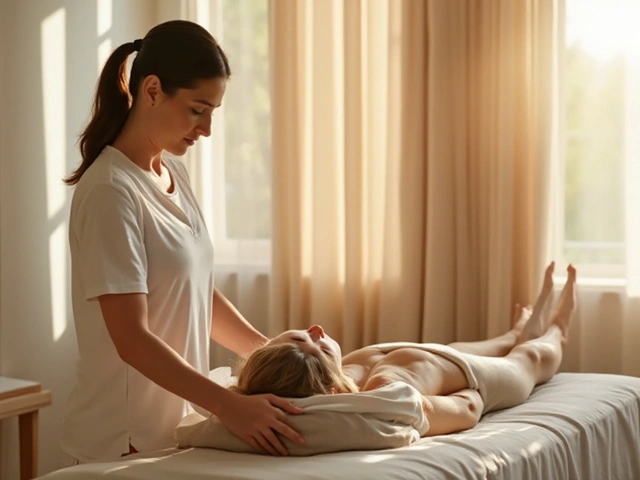Rolfing Suitability Quiz
Answer the following questions to find out if Rolfing might be beneficial for you:
Rolfing is a form of Structural Integration that manipulates the body's fascia to improve posture, movement, and pain perception. Many people hear the term and immediately picture a deep‑tissue massage or an aggressive stretch, which fuels a slew of myths that can keep potential clients away.
Myth #1: Rolfing Is Just a Hard‑Core Massage
When someone says "Rolfing," the first image that pops up is often a therapist using knuckles and forearms to "work out" knots. In reality, Structural Integration is a systematic approach that targets the connective tissue network, not just isolated muscle groups. The technique borrows concepts from myofascial release a gentle, sustained pressure method aimed at loosening fascia but applies them in a whole‑body, map‑like fashion. While a deep‑tissue massage may focus on a sore shoulder, a Rolfing session evaluates how that shoulder interacts with the spine, hips, and even the soles of the feet. This broader perspective is why results often feel more "balanced" than a typical massage.
Myth #2: It’s Painful and Unsafe
Because Rolfing works on dense connective tissue, some discomfort is expected, much like the stretch after a good workout. However, the discomfort is usually a signal that the fascia is being mobilized, not a sign of injury. Practitioners undergo rigorous training-typically 500‑800 hours covering anatomy, biomechanics, and client communication-to ensure they apply pressure safely. The founder Ida Rolf designed the method to be therapeutic, not punitive, emphasizing gradual progression over force. Clients with chronic pain often report a decrease in symptom intensity after a series of sessions, indicating the method can be gentle enough for most people when delivered correctly.
Myth #3: There’s No Scientific Evidence
Critics claim Rolfing lacks research, yet several peer‑reviewed studies have examined its effects on posture, range of motion, and pain. A 2022 biomechanics paper measured changes in lumbar lordosis after a ten‑session Rolfing protocol and documented a statistically significant improvement of 4.2° on average. Another clinical trial published in the Journal of Bodywork & Movement Therapies found a 30% reduction in chronic lower‑back pain scores after six Rolfing sessions compared to a control group receiving standard physiotherapy. While more large‑scale trials are needed, these findings suggest that the practice does more than a placebo.
Myth #4: It’s Only for Elite Athletes
Because the method can increase functional efficiency, elite athletes sometimes use Rolfing to fine‑tune their biomechanics. However, the same principles apply to anyone who wants better movement quality-office workers with desk‑related tension, seniors seeking improved balance, or parents carrying children all benefit from a fascia‑centric approach. In fact, a survey of 1,200 Rolfing clients in Australia showed that 68% were non‑athletes, primarily seeking relief from everyday aches and posture correction.
Myth #5: One Session Solves Everything
Rolfing is a series‑based practice. The original protocol consists of ten structured sessions, each building on the previous one to gradually remodel the fascial network. While some people feel a noticeable shift after the first or second visit, lasting change generally requires the full series. Think of it like learning a musical instrument: the first lesson gives you a taste, but mastery demands practice over time.

How Rolfing Actually Works
The core mechanism is fascial manipulation. Fascia is a continuous sheet of collagen that envelops muscles, bones, and organs. When chronic tension or adhesions develop, they restrict movement and create pain patterns. During a Rolfing session, the practitioner applies sustained pressure to specific fascial lines-often referred to as "myofascial meridians"-to encourage tissue remodeling. This process stimulates fibroblasts, the cells responsible for producing and reorganizing collagen, leading to improved elasticity and a more efficient transmission of muscular forces.
Rolfing Compared to Similar Modalities
| Practice | Typical Session Length | Primary Focus | Typical Pressure | Training Hours (approx.) |
|---|---|---|---|---|
| Rolfing | 60‑90minutes | Whole‑body fascia re‑education | Medium‑high, client‑adjusted | 500‑800hours |
| Deep Tissue Massage | 45‑60minutes | Localized muscular tension | High, often uncomfortable | 250‑500hours |
| Osteopathy | 30‑60minutes | Joint‑centric structural balance | Low‑medium, gentle | 1,000‑1,500hours (medical degree) |
| Chiropractic | 15‑30minutes | Spinal alignment & nerve flow | Medium, thrust‑focused | 4,000‑4,500hours (Doctor of Chiropractic) |
While each approach shares a goal of improving function, the scope, technique, and training differ. Understanding these nuances helps you pick the right tool for your specific needs.
Related Concepts and How They Intersect
- Posture the alignment of body segments against gravity - Rolfing directly targets postural imbalances by addressing the fascia that holds the skeleton in place.
- Chronic Pain persistent pain lasting longer than three months - By releasing fascial restrictions, the method can lower nociceptive signaling.
- Biomechanics the study of movement forces - Rolfing’s systematic approach aligns with biomechanical principles, improving efficiency.
- Somatic Education learning that heightens body awareness - Clients often report increased proprioception after sessions.
- Movement Therapy exercise‑based interventions to restore function - Rolfing can complement movement programs by preparing the tissue for better performance.
These intersecting ideas illustrate why Rolfing sits at a crossroads of manual therapy, movement science, and holistic health.
Choosing the Right Practitioner
- Verify credentials: Look for a certified Structural Integration practitioner who has completed a recognized program (e.g., 10‑session curriculum).
- Ask about experience: How many full series have they administered? Seasoned therapists typically have >150 completed series.
- Discuss health history: A good practitioner will screen for contraindications such as acute fractures, severe osteoporosis, or uncontrolled hypertension.
- Observe communication style: Rolfing often involves reassessing posture and movement; an educator who explains the process builds trust.
- Trial session: Many studios offer a shorter “intro” session; use it to gauge pressure tolerance and therapist rapport.
Following these steps can reduce the risk of a bad experience and maximize the benefits of the method.
Takeaway
By separating fact from fiction, we see that Rolfing is neither a brutally painful ordeal nor a quick fix. It is a structured, fascia‑focused system that, when practiced by a well‑trained therapist, can improve posture, reduce chronic pain, and enhance movement efficiency. The next time you hear a rumor about Rolfing myths, you’ll have the evidence to decide for yourself.
Frequently Asked Questions
What exactly is Rolfing?
Rolfing, also called Structural Integration, is a manual therapy that manipulates the body’s fascia to improve alignment, movement, and reduce pain. It uses sustained pressure along connective tissue lines rather than focusing solely on muscles.
How many sessions are needed?
The classic protocol consists of ten weekly sessions, each building on the last. Some people notice benefits earlier, but lasting change typically requires the full series.
Is Rolfing safe for pregnant women?
A qualified practitioner can modify techniques for pregnancy, focusing on gentle fascial release and avoiding the abdomen. It’s best to get clearance from a medical professional first.
How does Rolfing differ from deep‑tissue massage?
Deep‑tissue massage targets specific muscle knots with intense pressure, usually in isolated areas. Rolfing looks at the whole fascial network, using moderate pressure to remodel tissue alignment across the entire body.
Can Rolfing help with chronic lower‑back pain?
Yes. Research shows a statistically significant reduction in pain scores after a series of Rolfing sessions, likely because the method releases fascial restrictions that contribute to lumbar tension.
Do I need to do exercises between sessions?
Practitioners often recommend gentle movement drills or posture awareness exercises to reinforce the changes made during treatment. These aren’t intensive workouts, just simple habits like “stand tall” cues.
What qualifications should I look for?
A certified Structural Integration practitioner who completed a recognized 10‑session program and maintains continuing education. Look for membership in bodies such as the International Association of Structural Integration (IASI).







